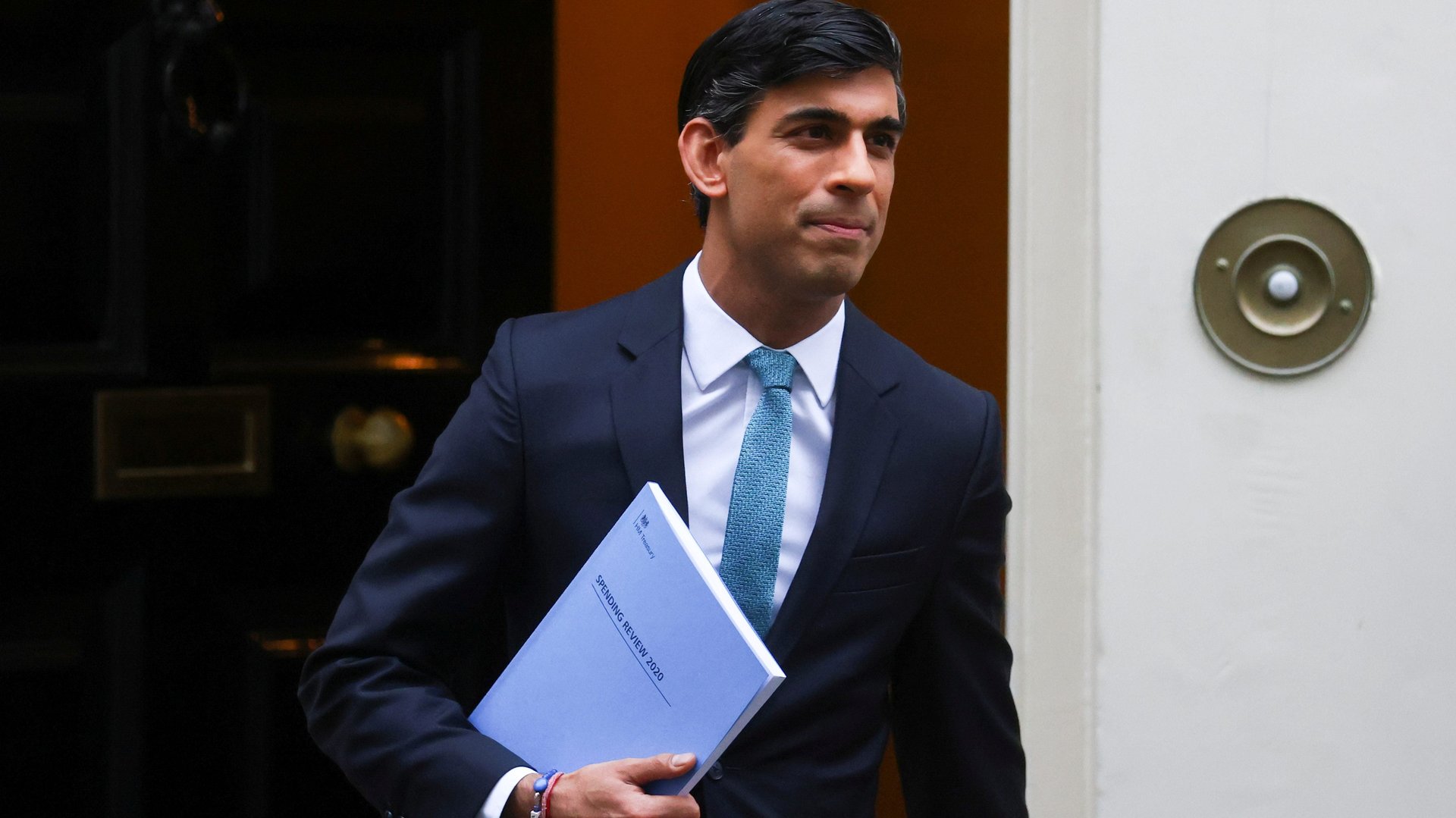How much more stimulus will the UK economy need?
Spare a thought for Rishi Sunak. When he became the UK’s chancellor of the exchequer in Feb. 2020, he was known to be a deficit hawk, keen to make sure that his government borrowed and spent with abundant caution.


Spare a thought for Rishi Sunak. When he became the UK’s chancellor of the exchequer in Feb. 2020, he was known to be a deficit hawk, keen to make sure that his government borrowed and spent with abundant caution.
Then the pandemic hit—an emergency so extreme that Sunak found himself having to do the opposite. Through last year, the government rolled out hundreds of billions of pounds in stimulus spending—offering loans to businesses, paying chunks of the wages of furloughed employees, funding the National Health Service. The Office of Budget Responsibility reckoned that the government would need to borrow nearly £400 billion ($554 billion) in this financial year—the highest such sum seen in peacetime.
On Mar. 3, Sunak will present his new budget—a chance for him to exercise his fiscal-conservative instincts. “I worry because, at various points, he’s indicated that he’s keen to wind down these stimulus support schemes very quickly,” said Carsten Jung, a senior economist at the Institute for Public Policy Research.
But Sunak is under pressure—from think-tanks, the opposition, and even his own party members—to spend and borrow more, and to keep taxes low. The UK may need an additional stimulus of as much as £190 billion, or 8.6% of the GDP to restart the economy and protect businesses and families, according to a new report co-authored by Jung. So far, the report pointed out, Sunak has officially only committed around 2%.
The tension over how long the coronavirus stimulus should run, and how much more the government should spend, isn’t limited to the UK. Every economy that has been hit by the pandemic is facing versions of this debate. Does Germany need another round of 2020-like stimulus? Does the US require a $1.9 trillion spending package? The question of how much the government ought to spend speaks to the purpose of the stimulus itself, and thus to what has to happen before the stimulus can end.
Should Sunak continue the fiscal stimulus?
Not every economic stimulus is the same. During the 2008 crisis, most of the government’s support went to the financial sector and to corporations. Back then, there was a moral argument for limiting this support: that the crisis was engendered by the malfeasances of financial firms, which therefore deserved no taxpayer bailouts. The pandemic is different—morally, because the coronavirus is no one’s fault, but also structurally, in terms of whom the economic shock has affected. “The breadth of it requires a broader response,” Jung said. “So you’d want something comprehensive, to protect jobs and businesses and public services.”
Sometimes the mission of government spending is to goose the economy—to provide incomes so that people will consume more. In the pandemic, though, the stimulus has really tried to stave off a counterfactual: people falling out of jobs, spending less, sending the economy into a negative spiral. The purpose is to contain the damage, not to be aggressively expansionary.
The UK’s Eat Out To Help Out scheme, implemented last August, provides an example. Three days a week, the government paid 50% of the tabs of diners—up to £10 per person—at participating restaurants. The government spent £849 million on the program, which lasted four weeks. A new London School of Economics report shows that footfall in restaurants increased by 5-6% on those three days, and that the food sector posted 7-14% more recruitment listings. The scheme didn’t encourage people to go out for other purposes, and it didn’t show an increase in job postings for other industries related to the food sector. But even without a more dramatic economic improvement, jobs and businesses found some security; Sunak estimated that Eat Out To Help Out protected 1.8 million jobs in the hospitality sector.
Plenty of parts of the economy need similar support: furlough schemes, emergency funds for the National Health Service, local infrastructure, the education sector. But it’s an opportune time to borrow money to spend. “We have the capacity to go big for sure,” Ben Nabarro, Citibank’s UK economist, told Bloomberg. Interest rates are low, and may turn negative as the year progresses, Nabarro pointed out, making borrowing cheap.
As a result, taxes don’t need to be raised immediately to pay for this spending. “There is strong support for the ‘war bond’ type approach of parking the lockdown debt for the long term,” one unnamed Conservative Party MP told the Financial Times. It’s a winning policy, Jung said: “It’s like you get money for free, invest it in the economy, and get a positive return by increasing GDP.”
When should Sunak end the stimulus?
One cue for governments to start unwinding their stimulus programs is a decline in the rate of unemployment. Economists estimate that, even in an optimistic scenario, unemployment in the UK will touch 7.5% once furlough support ends, up from 4.5% before the pandemic. (The most recent statistics, released in November, pegged unemployment at 5%.) Another cue is the real interest rate. “If that goes up, that’s great—that’s a sign that the stimulus has played its role,” Jung said. If Sunak rolls out a couple of hundred billion pounds more in stimulus, Jung added, “it would bring unemployment close to the pre-crisis level by 2022.”
Ideally, Sunak would lay out the full heft of the stimulus in his budget, but it isn’t certain if he will; last year, the government preferred a piecemeal approach, launching new rounds of stimulus through the year. One comprehensive announcement would allow businesses to plan; it would give investment in public services time to get off the ground. “Adding clarity would be the optimum thing to do,” Jung said. “The more we do now, the less we need to do next year and the year after.”